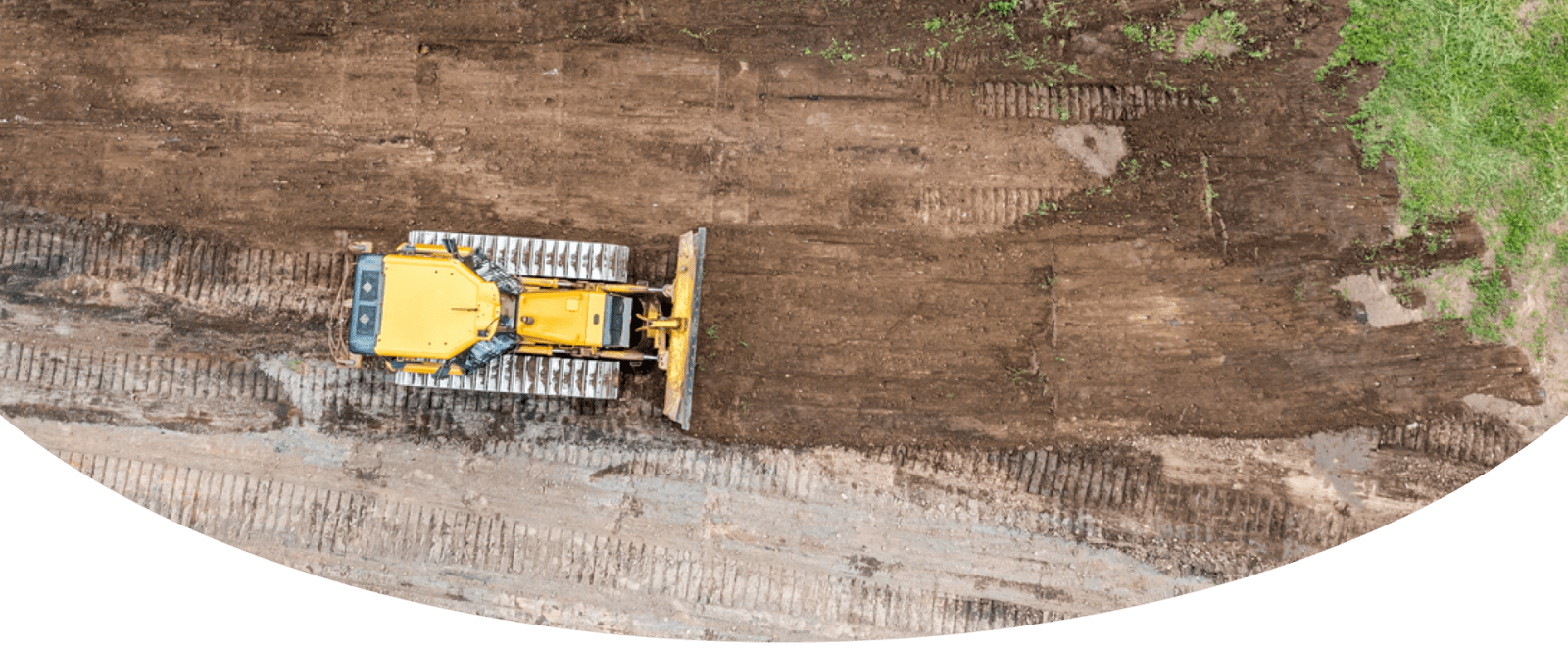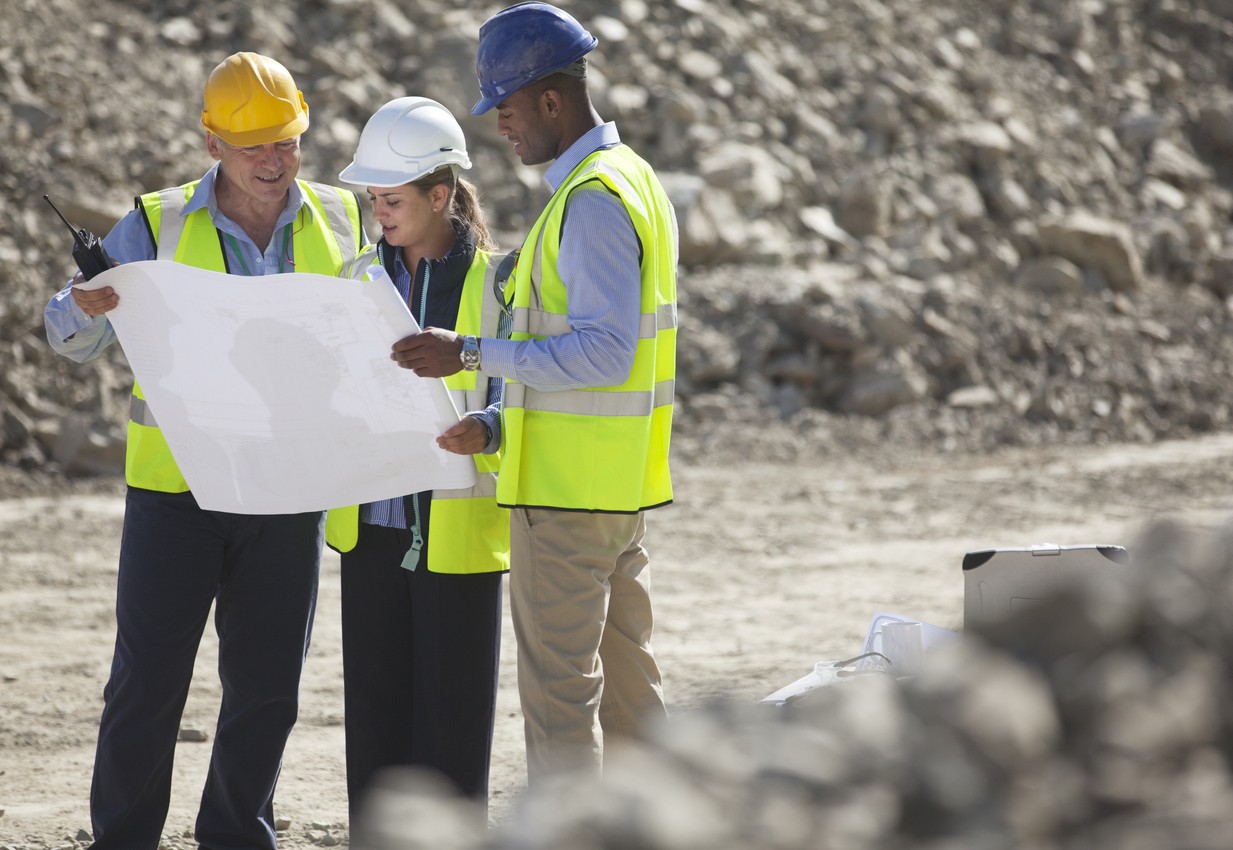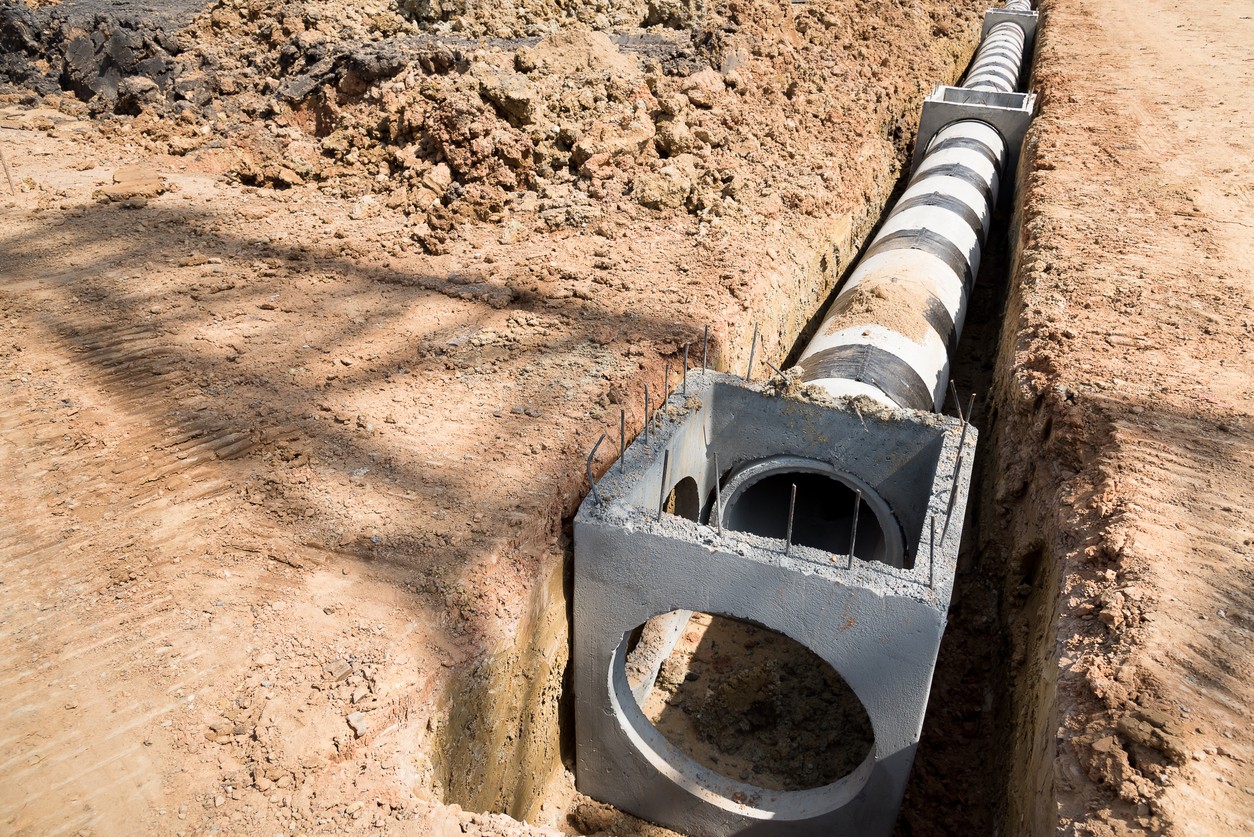
What is site preparation? As one portion of the broader process used when preparing a construction site for building, it can include a wide range of processes, including land clearing of trees, debris, and soil, installing erosion control and proper drainage, installing underground utilities, and other construction activities that are carried out prior to the start of the new construction. Site preparation work can involve the surrounding area as well, preventing erosion from impacting surrounding properties.
By comparison, site grading is a specific part of the site prep process that uses heavy machinery or other construction equipment to create a strong, stable foundation for the building to stand on. It could be considered the first step in the actual construction process, because if it isn’t put in place before the commercial property or home is built, the entire project can fail, an issue that the construction industry has seen several times when major construction projects collapse. Site preparation services can be required by a construction lender to ensure that the general contractor is undertaking proper site preparation to prevent these types of issues from occurring.
As mentioned previously, site preparation and grading are vital to the safety and stability of the construction project. Proper grading and site preparation create a visible improvement as excavation services create a strong base for the building to be constructed upon. Safety goes beyond the first inhabitants, however, or even those down the road, as the safety of your work crew can come into question if the proper site preparation isn’t completed first.
However, improper construction site preparation can also lead to damage or expensive repairs after the structure is occupied. If the foundation isn’t strong enough or properly prepared, it can cause the building to settle, causing cracks, bound doors and windows, and other damage within the structure. It can cause the foundation to collapse, which can lead to loss of structural stability, and which can result in serious injuries or loss of life.

There are several important land preparation steps in your building site process, whether you’re working on a major high-rise or a housing development. Here are the steps that you’ll commonly see in a land preparation project for a new building.
Site clearing involves stump removal, moving or destroying large rocks, hauling the debris away, or anything else that is able to interfere with the overall construction process. By getting these hard-to-move or bothersome items out of the way of construction, it’s much easier for survey crews, construction teams, and similar services to access and study the job site.
Having a professional survey crew perform the survey of the property is a vital step, as it determines both the boundaries of the property as well as the contours of the project site. This allows the construction team to properly position the commercial construction project within the site before starting their grading work.
In the greater Washington, DC area, we have a range of soils, from silty or sandy shore-front properties to heavy clay soils that may exist further inland. These soils need to be tested to determine whether they can bear the load of the structure or if additional supports, such as pylons leading to bedrock, need to be placed prior to construction.
Once it’s been determined where the exact boundaries are, other than a general real estate description, it’s time to start creating a comprehensive site plan for the project. Perhaps the changes in the soils or slope of the land will require one structure to be moved and another put into its place. This plan includes the structure or structures, utilities, drainage, and access roads.
Next, the site needs to be investigated thoroughly for anything that could be an obstacle to the construction process. This can include impacts on nearby historical sites, concerns by neighbors about the impact the new structure will have on the neighborhood, and similar issues. It can also include environmental concerns such as endangered species on site and whether erosion control will be needed.

Fortunately, there are often issues that can arise during the site preparation and grading process that can be worked around. Here’s a list of some of the most common issues that arise during this process:
During soil testing, you may find that the soil is too soft, too hard, or just bad for building on. In these situations, you may be able to improve the condition through compaction, getting heavier equipment in, or by putting supports down to bedrock to pass the structure’s weight down to that steady support.
Issues with bad soil can include settling of the foundation, cracking of walls or foundation spaces, or an unstable finished product. When you run into poor soil conditions, it’s essential as a construction team that you work with engineers to ensure that the finished structure is usable and stable.
If there are nearby water systems, you may have problems during the construction process. You may see water collecting at the foundation of the structure, which can undermine the foundation if not attended to. Heavy clay soils can cause issues with drainage, including causing a septic system to fail a percolation test.
For this reason, drainage issues should be addressed early in the work, and material brought in to help drain the water away from the structure. This can be accomplished by amending the soil through the addition of sand, adding drain tile, or other approaches that move water away from your project foundation.
Environmental concerns can include a range of issues, including artifacts from historic sites, endangered species, or erosion caused by the construction process. As soon as these issues are discovered, they should be addressed, so that if adaptations need to happen to the construction plan, they can be made as soon as possible to prevent losses.
Generally speaking, any special approvals, permits, or requirements should be sorted out prior to site preparation beginning, but that’s not always possible. If it wasn’t a known issue when starting, these problems should be addressed as soon as they are discovered. This may be the responsibility of the entity that hired the contractor, or the contractor itself.
As one of what can be a worst-case scenario, your construction team could discover pipes that have been buried, unmarked utilities, buried tanks, or similar issues that were not marked out on the survey. These can cause issues with the utility companies, or can simply be abandoned lines or structures that may be removed or filled to allow your team to proceed.
However, this is among the reasons why it’s important to have buried utilities marked at the very beginning of your site preparation process so that you can avoid hitting these problem areas. In some situations, such as hitting a high-pressure petroleum line or water main, a lot of damage can be done to the property, requiring long delays for site remediation or repair before continuing.
Your land preparation team should be trained to ensure that your people take the right response when needed to get the job done safely. This team should be able to recognize safety hazards, whether that is poor soil for structure support, environmental risks, utility lines that may pose a threat to worker health, and similar issues.
Once your safety team has been assembled, they should be able to produce guidelines and protocols that your construction team can put in place so that accidents can be avoided during the construction process. Because it doesn’t require as much physical work, it’s a great place to put injured or older workers with experience in the field without risking their health.
Site preparation and grading serve to provide a strong foundation for your construction project, and as such, are a vital part of your construction process that should be taken very seriously. If your team needs help finding the right tools for the job or needs heavy equipment to handle regular grading work or for an unexpected issue with site preparation, National Capital Inc. is ready to help. Please feel free to contact us through our website or call today at any of our four convenient locations for a fast response to your construction concerns.